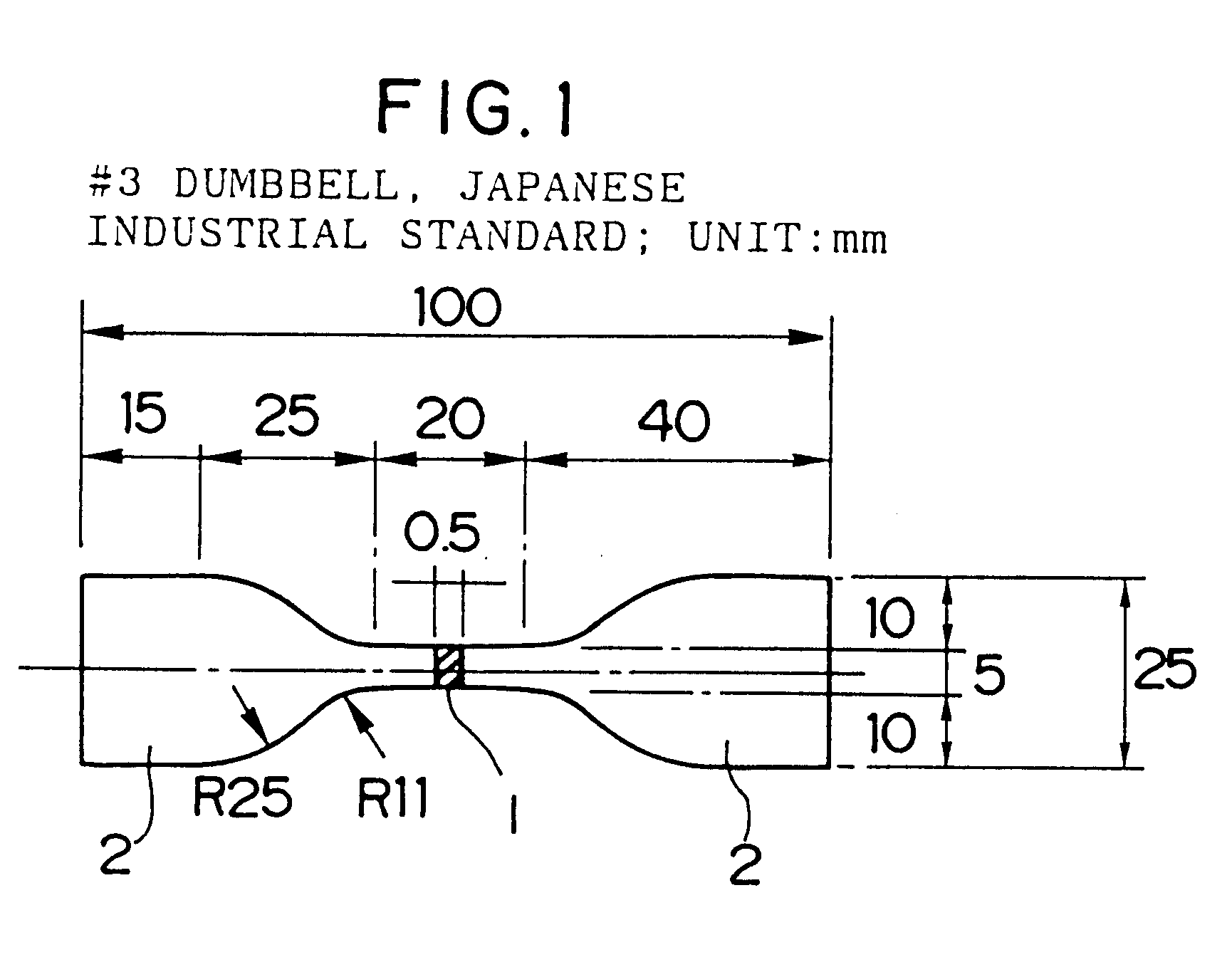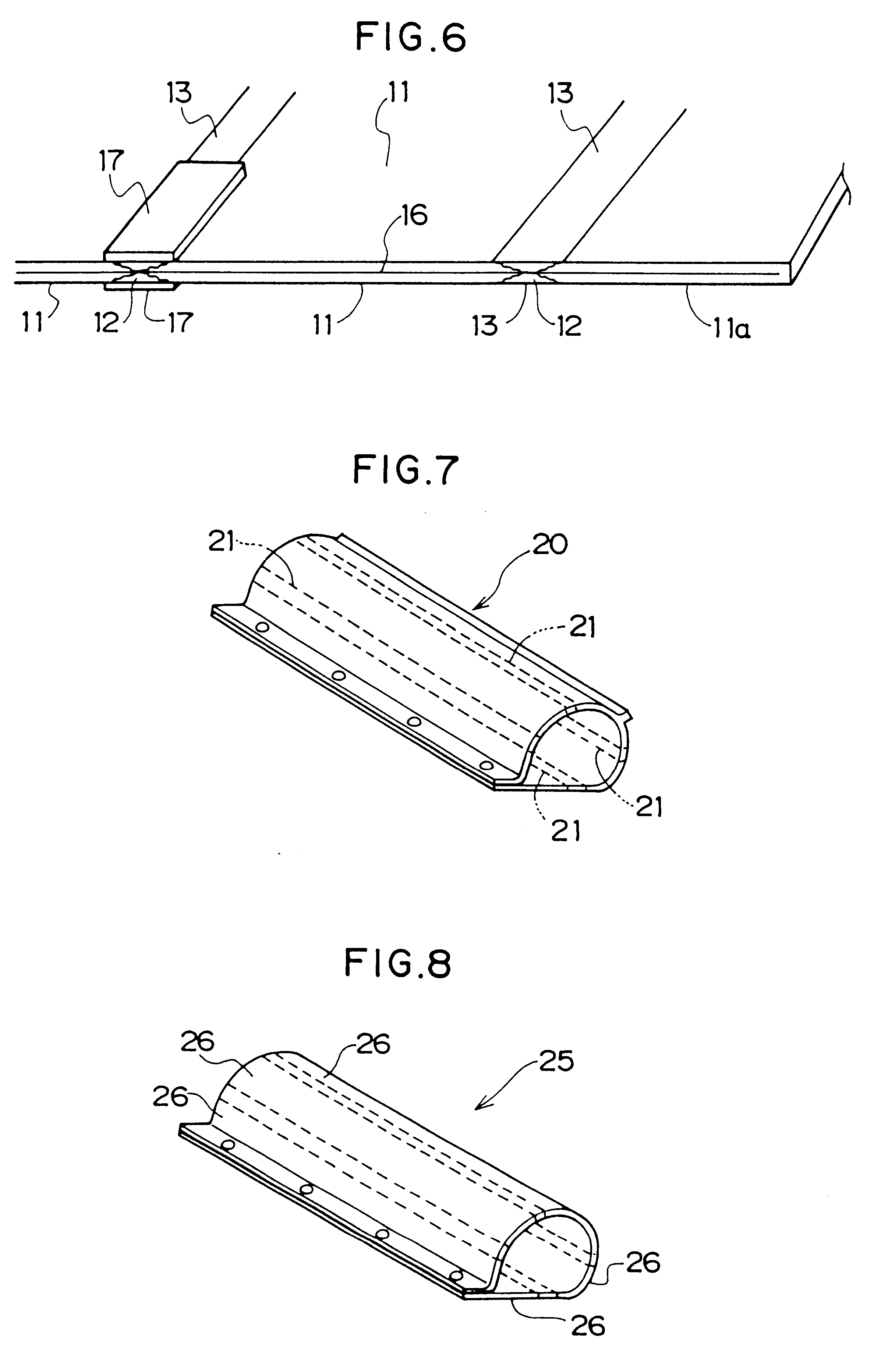However, it is difficult to completely remove dust formed by the treatment of buffing when a surface of a vulcanized rubber is treated with buffing, and the dust remaining on the surface makes it difficult to achieve complete adhesion.
However, the process described above has drawbacks in that demolding of the article having the unvulcanized surface after vulcanization of the other parts is difficult because of the unvulcanized condition of the surface, and that, when for example an article is made into an endless form, handling of the unvulcanized surface and operations of the adhesion must be conducted with extreme care because the unvulcanized part is tacky.
In conventional processes for producing a rubber product having an uneven structure like a slope
conveyor belt, producing the rubber product integrally in a
single step causes problems that a large amount of investment or a large area is required to install facilities for vulcanizing the product, that conditions of the operation become extremely complicated, and that it is very difficult to achieve uniform vulcanization.
However, the process for adhering a vulcanized rubber and an unvulcanized rubber has the same problems as those in the process for adhering vulcanized rubbers to each other described above.
Furthermore, when an unvulcanized rubber containing
sulfur in the same amount as that in the vulcanized rubber is used,
sulfur migrates from the unvulcanized rubber to the vulcanized rubber through the interface of adhesion during and after the process for adhering, and decrease in the
hardness (decrease in the
adhesive strength) at the surface of adhesion occurs.
Production of a
large size rubber weir requires a large amount of investment for production facilities, such as a large area for production and equipments of large sizes when the rubber weir is produced by vulcanizing it as a integral single body.
The processes described above have a big problem in the bonding of rubber plates to each other.
The operation of this procedure takes a considerable time because it is required that the peeling be achieved very accurately and the operation must be conducted very slowly in order to achieve satisfactory separation at a rubber layer.
Furthermore, when the rubber plates and the rubber of the same type fitting the stepped structure are used for the adhesion by vulcanization in the bonding of the rubber plates, the following problems arise.
In this case, the part of adhesion by vulcanization is in an overcured condition, and this causes decrease in stiffness at the part of adhesion.
Therefore, the rubber plates bonded to each other are not smoothly bent to the shape of a rubber weir.
(1) When the size of the belt is increased, a large amount of working is required for the treatment of buffing in the process of adhesion of a
flange, a cleat or the like described above, and equipments specially made for this treatment are necessary in some cases.
(2) The
working environment deteriorates by the treatment of buffing because of generation of dust or the like.
(3) Easiness of the treatment of buffing must be taken into consideration for the
rubber material used in the process, and this requirement tends to make it difficult to use a rubber having a good abrasion resistance which is required for a belt material.
(4) The process in which a
flange or a cleat is bonded to the base belt by bolts or screws is inferior in durability of the product because of concentration of stress to limited parts of the product during use. The bolts and screws used also cause increase in weight. Furthermore, the bolts and screws tend to be corroded when the product is frequently used in an outdoor
atmosphere.
(5) When a
rubber material similar to that of the base belt is used for a
flange or a cleat in the adhesion by vulcanization, migration of a crosslinking agent contained in the rubber materials takes place during the vulcanization, and weak portions are formed in the interface of adhesion. This phenomenon causes inferior durability.
This process for adhesion has the same problems as those in the adhesion of a vulcanized rubber and a vulcanized rubber described above.
(1) A large amount of working is required for the treatment of buffing of the surfaces for adhesion of the precured
tread and the base tire, and equipments specially made for this treatment are necessary in some cases.
(2) The
working environment deteriorates by the treatment of buffing because of generation of dust and the like.
(3) Easiness of the treatment of buffing must be taken into consideration for the
rubber material used for the precured
tread, and this requirement tends to make it difficult to use a rubber having a good abrasion resistance.
(4) A rubber compound similar to the rubber at the part for adhesion of the base tire is generally used as the unvulcanized rubber composition for adhesion in order to achieve tight adhesion of the base tire and the precured
tread to each other by vulcanization. Under this condition, migration of a crosslinking agent takes place from the rubber composition for adhesion to the base tire or from the rubber composition for adhesion to the precured tread during the vulcanization. This phenomenon causes formation of portions having a lower adhesive strength at the interface of adhesion, and the possibility that the whole or a portion of the part of adhesion has inferior durability arises.
When the difference in the contents of sulfur is more than 10 PHR, physical properties of the rubber composition for adhesion deteriorate, and decrease in the adhesive strength is caused.
 Login to View More
Login to View More 


